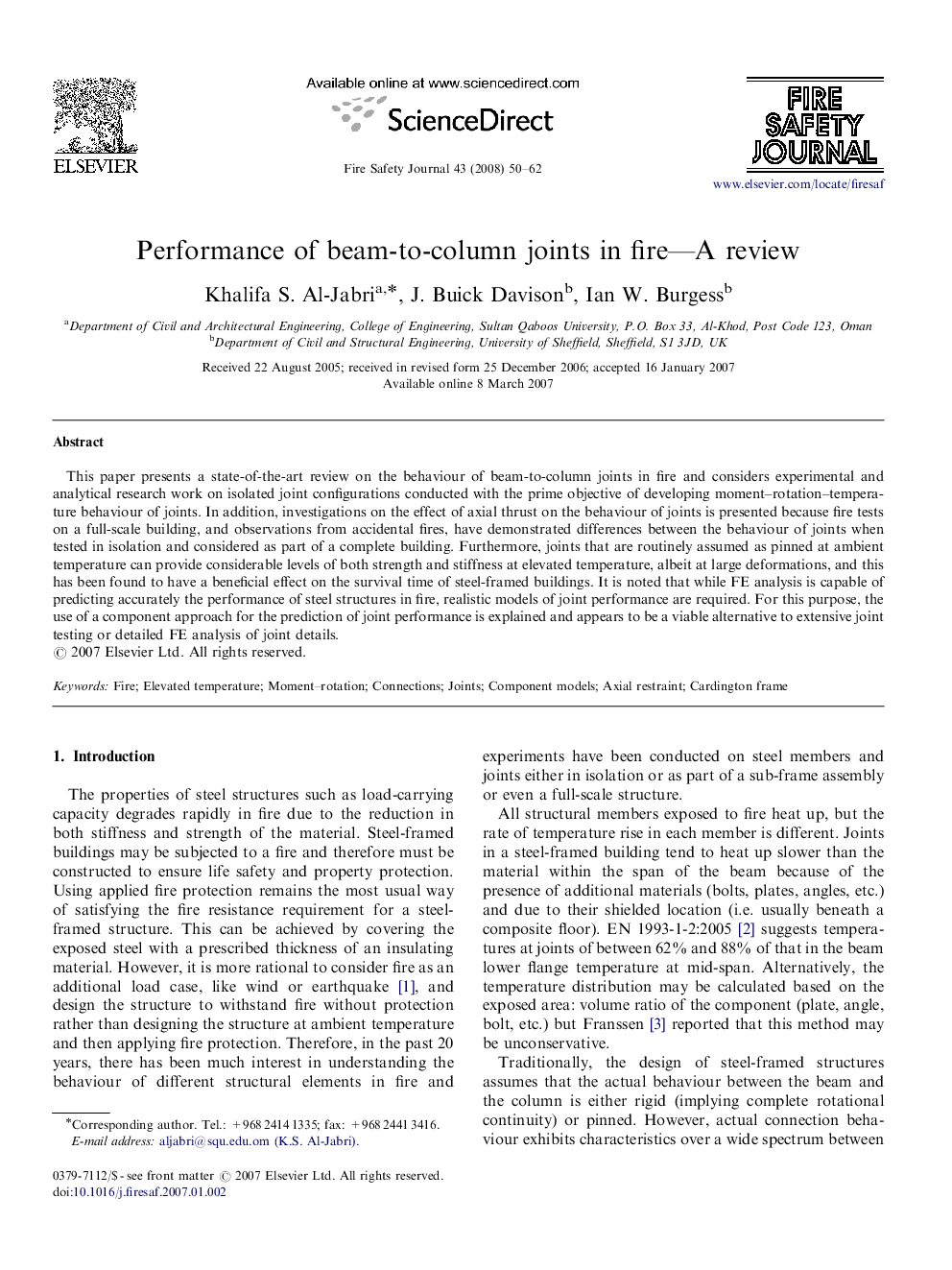| Article ID | Journal | Published Year | Pages | File Type |
|---|---|---|---|---|
| 270382 | Fire Safety Journal | 2008 | 13 Pages |
This paper presents a state-of-the-art review on the behaviour of beam-to-column joints in fire and considers experimental and analytical research work on isolated joint configurations conducted with the prime objective of developing moment–rotation–temperature behaviour of joints. In addition, investigations on the effect of axial thrust on the behaviour of joints is presented because fire tests on a full-scale building, and observations from accidental fires, have demonstrated differences between the behaviour of joints when tested in isolation and considered as part of a complete building. Furthermore, joints that are routinely assumed as pinned at ambient temperature can provide considerable levels of both strength and stiffness at elevated temperature, albeit at large deformations, and this has been found to have a beneficial effect on the survival time of steel-framed buildings. It is noted that while FE analysis is capable of predicting accurately the performance of steel structures in fire, realistic models of joint performance are required. For this purpose, the use of a component approach for the prediction of joint performance is explained and appears to be a viable alternative to extensive joint testing or detailed FE analysis of joint details.
